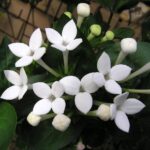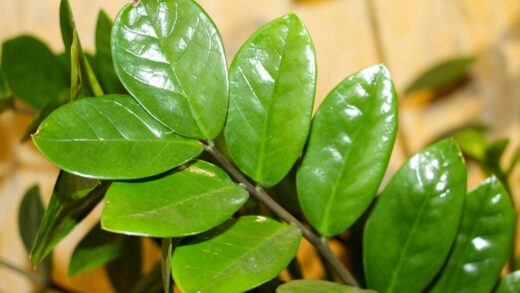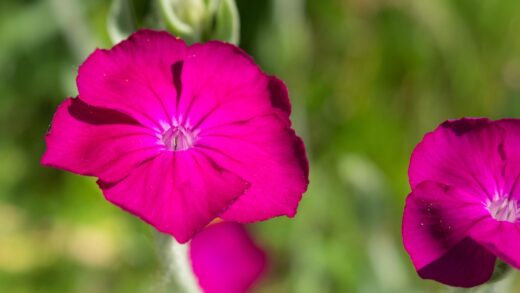The artichoke, a majestic vegetable with Mediterranean roots, has quite high nutrient requirements for successful cultivation. The fundamental condition for achieving an abundant and high-quality yield is a carefully planned and professionally executed nutrient management, which accompanies the plant throughout its entire life cycle. As the artichoke is a perennial crop with a long growing season, its nutrient uptake is continuous, requiring special attention from the farmer. A proper fertilization strategy not only increases the quantity of the harvest but also contributes to improving the size, firmness, and shelf life of the fleshy flower heads, the “hearts.”
The starting point for any nutrient management plan must be a detailed soil analysis, which reveals the physical and chemical properties of the soil. The artichoke prefers deep, well-drained, nutrient-rich loamy soils with a pH that is slightly acidic to neutral, ideally in the range of pH 6.5 to 7.5. Soils that deviate from this, being too acidic or alkaline, can inhibit the uptake of certain essential nutrients, even if they are present in sufficient quantities in the soil. The analysis should cover the soil’s organic matter content, as well as the levels of the main macronutrients, namely nitrogen (N), phosphorus (P), and potassium (K).
During pre-planting soil preparation, improving soil structure and increasing organic matter content are crucial. Deep tillage promotes the development of the plant’s strong, deep-reaching root system, which is the basis for future water and nutrient uptake. The application of well-rotted manure or compost (at a rate of 30-50 tons per hectare) not only provides nutrients but also improves the soil’s water-holding capacity, promotes a crumbly structure, and stimulates soil life. As organic matter decomposes, nutrients are released slowly, in harmony with the plant’s needs, providing a long-lasting source.
The purpose of base fertilization is to incorporate the less mobile nutrients, primarily phosphorus and potassium, into the deeper layers of the soil. These nutrients must be worked into the soil before planting so that they are readily available to the plant in the root zone. The amounts applied should be determined based on soil test results, which generally correspond to 100-150 kg/ha of P2O5 and 200-250 kg/ha of K2O active ingredient. A smaller dose of nitrogen can also be applied as part of the base fertilization to support initial growth.
The role and supplementation of macronutrients
Nitrogen (N) is essential for the vigorous vegetative growth of the artichoke, including the development of a large assimilating leaf area and a fleshy stem, which form the basis for yield production. The plant’s nitrogen demand is significant throughout the entire growing season, but it peaks during the phase of rapid growth and at the beginning of the formation of the flower buds, or heads. Nitrogen deficiency results in stunted growth and small, yellowing leaves, while an excess of nitrogen can lead to a loose tissue structure, increased susceptibility to diseases, and a delay in head formation, thus reducing the quality of the heads.
More articles on this topic
The key to effective nitrogen fertilization is split application, where the nutrient is supplied in several smaller doses, aligned with the plant’s growth stages. The first portion of the annual nitrogen dose (which is typically 150-200 kg/ha of active ingredient) should be applied during base fertilization or after planting, once the plants have established. Subsequent top-dressings are carried out during the growing season, typically 3-4 times, timed to coincide with the most intensive growth periods, such as during rosette development and before the appearance of the main bud. Highly soluble and easily absorbable fertilizers, such as ammonium nitrate or calcium ammonium nitrate, are most suitable for this purpose.
Phosphorus (P) plays a fundamental role in root formation, energy transfer processes (ATP synthesis), and the regulation of flowering and fruit set. A sufficient phosphorus supply is particularly crucial at the beginning of the growing season for the development of a strong and extensive root system in young plants. A characteristic symptom of phosphorus deficiency is a purplish discoloration of the leaves, poor root development, and slow growth. Since phosphorus is extremely immobile in the soil, the most effective way to supplement it is through pre-planting base fertilization, incorporating it into the depth of the root zone.
Potassium (K) is of outstanding importance in regulating the plant’s water management, increasing the strength of cell walls, and enhancing resistance to diseases and environmental stress. In the case of artichokes, potassium directly influences the quality of the yield, including the firmness, shelf life, and taste of the heads. The plant’s demand for potassium is highest in the second half of the growing season, during the intensive growth of the buds. Potassium deficiency manifests as yellowing and subsequent necrosis at the leaf margins and degrades the plant’s overall condition. The majority of the required amount is applied as a base fertilizer, but on sandy soils prone to leaching, supplementary potassium application during the season may be justified.
The importance of meso- and microelements
In addition to macronutrients, mesoelements, particularly calcium (Ca) and magnesium (Mg), are also essential for the healthy development of the artichoke. Calcium is a fundamental component of cell walls, contributing to tissue firmness, and plays a key role in preventing certain physiological disorders, such as internal browning. Magnesium is the central atom of the chlorophyll molecule and is therefore essential for the process of photosynthesis, which provides the plant’s energy. The availability of these elements is greatly influenced by soil pH; in acidic soils, the use of dolomitic lime supplies both calcium and magnesium while also shifting the pH towards the optimal range.
More articles on this topic
Among the micronutrients, boron (B) deserves special attention in artichoke cultivation, as the plant is particularly sensitive to its deficiency. Boron is essential for cell division, pollen viability, sugar transport, and fruit set. Boron deficiency can cause serious quality problems, with characteristic symptoms being hollow stems and the development of deformed, unmarketable flower buds. Boron should be applied with great care, as the range between deficiency and toxicity is quite narrow; application should always be based on soil or leaf analysis.
Other important micronutrients, such as iron (Fe), manganese (Mn), and zinc (Zn), primarily act as catalysts in enzymatic processes and are therefore indispensable for plant metabolism. Their deficiency most often occurs in high-pH, calcareous soils where their availability is limited. Iron deficiency, for example, manifests as a characteristic interveinal chlorosis (yellowing) on young leaves. The most suitable method for a quick and effective remedy for these deficiency symptoms is foliar fertilization, which involves applying the nutrients in a solution directly onto the leaves.
Creating a balanced micronutrient supply is a complex task that emphasizes prevention. It is important to know that interactions can occur between individual elements, so an excess of one nutrient can inhibit the uptake of another (antagonism). The most reliable method for determining precise needs is regular soil and leaf analysis, which allows for the targeted replenishment of missing elements. Increasing the soil’s organic matter content also improves the availability of micronutrients, as organic molecules act as chelating agents, keeping them in solution in a form that is available to the plant.
Modern fertilization techniques and sustainability
In modern agriculture, fertigation, or the application of water-soluble fertilizers through an irrigation system, is gaining more and more ground. This technology has numerous advantages in artichoke cultivation: it allows for the precise and uniform distribution of nutrients directly to the root zone, minimizing losses from leaching. The method is extremely flexible, as the composition of the nutrient solution can be changed according to the plant’s phenological stage, even from day to day, ensuring an optimal supply throughout the entire growing season. In intensive cultivation systems, fertigation is the most effective way to achieve high yields and excellent quality.
Another innovative solution is the use of controlled-release fertilizers (CRFs). These granules, coated with a special material, release nutrients gradually over weeks or even months, influenced by soil moisture and temperature. Their use can reduce the number of applications, saving labor and costs, while providing a continuous and steady supply of nutrients. Due to the long growing season of the artichoke, this technology can be particularly advantageous, as a significant portion of the plant’s nutrient needs can be met with a single base application, also reducing the environmental impact.
Leaf analysis is an indispensable tool for optimizing the fertilization program. While soil analysis provides information about the soil’s nutrient-supplying capacity, leaf analysis shows the actual nutritional status of the plant at a specific point in time. By analyzing samples taken from the leaves, it is possible to determine precisely which nutrients are deficient or in excess in the plant’s tissues, allowing for quick and targeted intervention, even before visual deficiency symptoms appear. Correctly timed and professionally conducted leaf diagnosis helps to fine-tune nutrient supplementation and prevent yield loss.
Successful and sustainable artichoke cultivation requires an integrated nutrient management approach that considers both economic and environmental aspects. This holistic approach includes precision nutrient application based on soil and leaf analysis, the conscious use of organic matter to maintain soil health, and the application of modern technologies such as fertigation or controlled-release fertilizers. The goal is not only to achieve maximum yield but also to maintain long-term soil fertility and protect the environment.


















